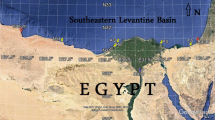Summary
At the Tanzanian east coast the prevailing winds of the general circulation exhibit seasonal changes in direction in a kind of monsoonal system. The sea and land breezes, which are limited here to diurnal modifications of the general winds, therefore also vary with the seasons. During the northeast monsoon a sea breeze trend prevails most of the time, while in the southeast monsoon season the main trend is from the land. Only during the intermediate periods between the monsoons a diurnal reversal of sea and land breezes develops regularly.
The effects of these winds, especially the sea breeze, on the physiological temperature conditions near the coast are of considerable importance. A decrease of the physiological temperature is produced by the advection of cool air, and a further reduction of thermal stress is provided by the improved air ventilation related to the higher wind velocities of the breezes.
Since all impressions of physiological temperature are subjective, it is difficult to express these influences quantitatively. However, estimates indicate that the old adage that “the winter in the tropics occurs at night” is no longer valid at the Tanzanian coast when the physiological temperature is considered, because the seasonal differences are larger than the diurnal variations.
Zusammenfassung
An der Ostküste Tansanians zeigen die vorherrschenden Winde der allgemeinen Zirkulation einen jahreszeitlichen Richtungswechsel in einer Art von Monsunsystem. Die Brisen, die hier nur als tageszeitliche Abänderungen der Monsune auftreten, zeigen daher ähnliche jahreszeitliche Unterschiede. Während des Nordostmonsuns herrscht meistens eine Seebrise vor, in der Periode des Südostmonsuns dagegen eine Landbrise. Nur in den beiden Übergangszeiten zwischen den Monsunen wechseln See- und Landbrise in einem tageszeitlichen Rhythmus.
Die Auswirkungen dieser Winde, speziell der Seebrise, auf die physiologischen Temperaturverhältnisse an der Küste sind von großer Bedeutung. Eine gewisse Kühlung wird durch die Advektion maritimer Luftmassen verursacht. Eine weitere Linderung der Hitze bringt die verbesserte Ventilation durch die höheren Windgeschwindigkeiten der Brisen.
Da alle Empfindungen der physiologischen Temperatur naturgemäß subjektiv sind, können diese Einflüsse der Brisen schwer in Zahlen ausgedrückt werden. Schätzungen ergeben jedoch, daß die jahreszeitlichen Unterschiede der physiologischen Temperatur größer sind wie die tageszeitlichen. Damit wird die bekannte Aussage von Humboldts, daß der Winter der Tropen während der Nacht käme, an der Ostküste Tanzaniens nicht bestätigt.
Similar content being viewed by others
References
Bargman, D. J.: The Climate of Dar es Salaam. In: Sutton, J. E. G. (Editor): Dar es Salaam, City, Port and Region. Tanzania Notes and Records, Nr. 71, p. 55–64 (1970).
Bedford, T.: Environmental Warmth and Its Measurement. Medical Research Council, London, War Memorandum No. 17, p. 24 (1940).
Buettner, K. J. K.: Physical Aspects of Human Bioclimatology. In: Malone, T. F. (Editor): Compedium of Meteorology, Boston, Mass., p. 1113 (1951).
Court, A.: Wind Chill. Bull. American Met. Soc.29, 487–493 (1948).
E. A. M. D. (East African Meteorological Department): Frequencies of Surface Wind Speeds and Directions, Part III. Tanganyika and Zanzibar, Nairobi, 264 pp., 1961.
E. A. M. D.: Climatological Statistics for East Africa and Seychelles, Part III. Tanganyika and Zanzibar, Nairobi, 75 pp., 1964.
Kimble, G. H. T., and coll.: Tropical Land and Sea Breezes. Bull. American Met. Soc.27, 99–113 (1946).
Newell, B. S.: A Preliminary Survey of the Hydrography of the British East African Coastal Waters. Fishery Publications, Colonial Office, No. 9, London, 11 (1957).
Smith, F. E.: Indices of Heat Stress. Medical Research Council, London, Memorandum No. 29, 8 (1955).
Stephenson, P. M.: An Index of Comfort for Singapore. Meteor. Magazine92, 338–345 (1963).
Stephenson, P. M., and C. N. McLeod: Note on the Errors Involved in Computing Mean Comfort Indices from Mean Values of Dry-Bulb and Wet-Bulb Temperatures and Wind Speed. Meteor. Magazine94, 171–173 (1965).
Stone, R.: On the Practical Evaluation and Interpretation of the Cooling Power in Bioclimatology. Bull. American. Met. Soc.24, 295–303 and 327–339 (1943).
Terjung, W. H.: Physiologic Climates of the Conterminous United States; a Bioclimatic Classification Based on Man. Annals Assoc. American Geographers56, 143–151 (1966).
Teskeredzic, F.: The Influence of Climate on Building Orientation in Dar es Salaam. Unpublished M. A. Thesis, University of Dar es Salaam, 176 p., 1971.
Thom, E. C.: Cooling Degree Days. Air Conditioning, Heating and Ventilating,22, 65–72 (1958).
Thompson, B. W.: The Climate of Africa. Nairobi, 127 pp., 1965.
Trewartha, G. T.: An Introduction to Climate. 3rd ed., New York, 40, 1954.
U. S. Weather Bureau: Notes on Temperature — Humidity Index. L. S. 5922, 4 pp., 1959.
Webb, C. G.: An Analysis of Some Observations of Thermal Comfort in an Equatorial Climate. Brit. J. Industrial Medicine16, 297–310 (1959).
Webb, C. G.: Thermal Discomfort in an Equatorial Climate. J. Institute of Heating and Ventilation Engineers7, 1–8 (1960).
Wexler, R.: Theory and Observations of Land and Sea Breezes. Bull. American Met. Soc.27, 272–287 (1946).
Author information
Authors and Affiliations
Additional information
With 7 Figures
Rights and permissions
About this article
Cite this article
Nieuwolt, S. Breezes along the Tanzanian east coast. Arch. Met. Geoph. Biokl. B. 21, 189–206 (1973). https://doi.org/10.1007/BF02243727
Received:
Issue Date:
DOI: https://doi.org/10.1007/BF02243727




